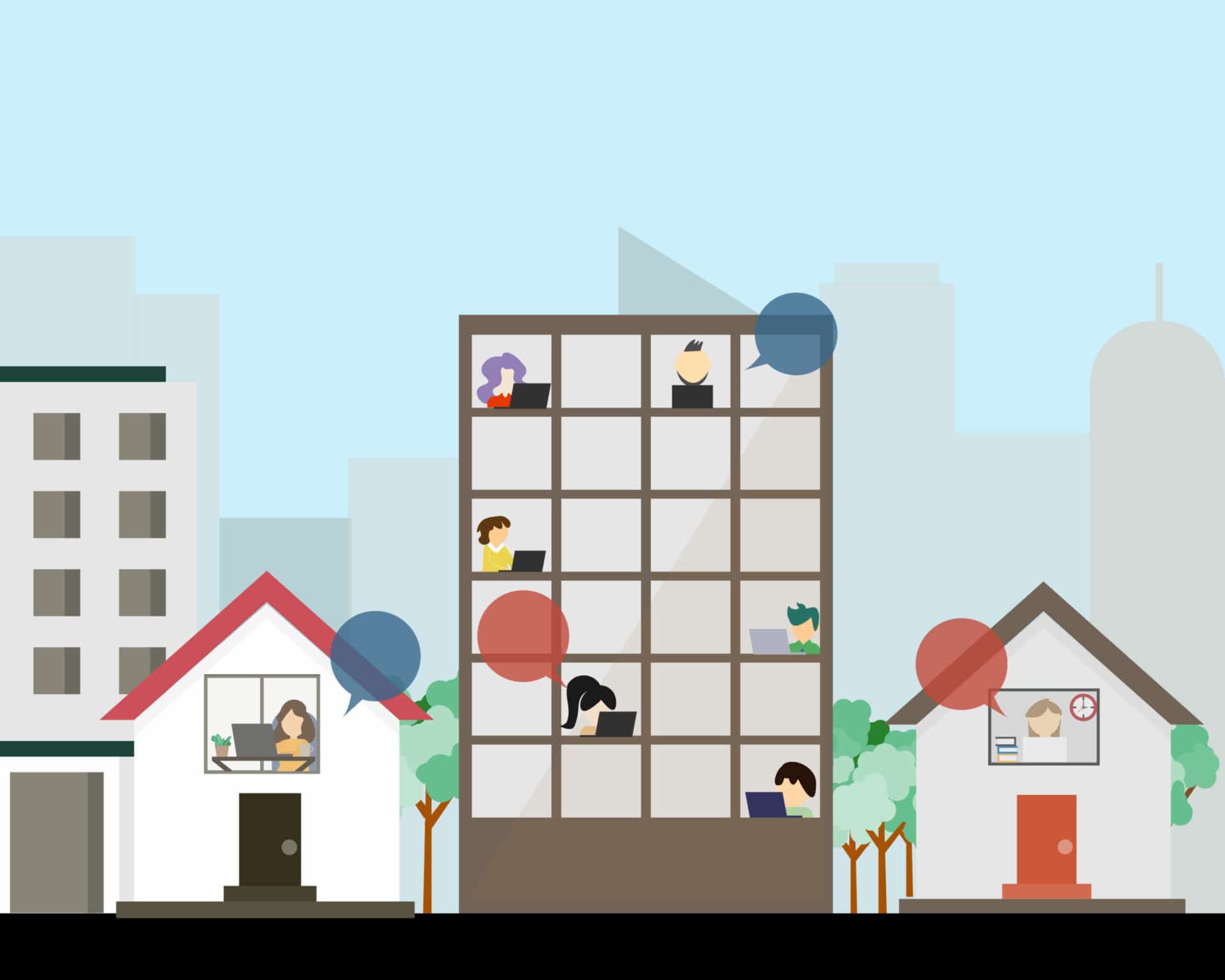Because work is no longer defined by physical location, designing the ‘perfect’ office setup isn’t going to cut it. Enterprises must now design a hybrid work experience that suits all employees in their organization, no matter where, when, or how they do their jobs.
However, it seems the honeymoon period for hybrid work may be over, or at least the model most organizations have deployed so far. A recent poll of 2,000 office workers suggests organizations in the U.S., Australia, and Europe are still grappling with how to deploy technology for hybrid work. 1 in 5 employees say that they either haven’t been trained to use the collaboration tools their employers have invested in or that they aren’t the right tools for the job. Meanwhile, 78% of polled workers believe that poor collaboration wastes 3 to 5 hours of their productivity a week.
Zayo’s powerful connectivity products such as Dedicated Internet Access, SD-WAN and CloudLink can keep you connected, secure, and performant for the deluge of new connections from outside your facilities. However, you’ll need more than just high-quality network services to execute a successful hybrid work program. You’ll need a complete solution.
According to Gartner’s VP Analyst for Employee Experience Adam Preset, enterprises must co-opt the new hybrid reality by realizing that it’s much more than just a new set of remote work technologies.

Shift in thinking
“We no longer necessarily think about work as somewhere we go, because we know we can do that from anywhere,” Preset said in a recent presentation of Gartner’s latest research on hybrid work. He argued the evolution of hybrid work will require an even bigger philosophical shift by employers: from designing work spaces to designing work experiences.
Below are the key things Preset urged enterprises to keep in mind when designing a hybrid work experience for their organizations.
Experience is everything
Although the Great Resignation has made hiring and retaining workers extremely challenging, Preset said the upside is that it’s forcing organizations to reprioritize. The focus is no longer on customer experience over employee experience, but treating both as pieces of a larger puzzle.
“It’s called Total Experience,” he explained. “It interlinks customer experience, the customer user experience, employee user experience and, ultimately, employee experience as well. More engaged, more satisfied employees create better experiences for customers.”
So, to create a great customer experience, you must first create a great employee experience. And the key to that is designing an excellent hybrid work environment enabled by having the right technologies in place.
“More engaged, more satisfied employees create better experiences for customers.”
Connection makes it happen
Redesigning around the Total Experience means making the best use of connected technologies. According to Preset, “technology is the touchpoint for employee experience.” He lists some key remote tools that are essential for crafting a connected, hybrid work experience:
- visual collaboration
- collaborative work management
- desktop-as-a-service
- digital experience monitoring
- hybrid meeting solutions
Of course, these tools need to be implemented in a way that considers the entire work environment. Ensuring they are maintained to run efficiently and at speed and that they don’t get in the way of employees’ existing processes. He emphasized, however, that designing an exceptional hybrid work experience requires thinking beyond just the tech.

Hybrid isn’t just WFH
For one thing, Preset wants organizations to stop thinking of hybrid as either ‘working from office’ or ‘working from home.’ His spheres of hybrid work include:
- office work
- home office work
- mobile work
- frontline work
Organizations must re-examine how employees do their jobs in these different spheres and how their needs change across all of them. For example, he believes frontline workers have been particularly underserved by hybrid work technology thus far.
“Redesigning frontline work experiences means having a new look at the generalized collaboration tools that we typically give to workers in offices, and recognizing that they haven’t extended as much as we needed to match the new unique needs of the frontline.”
Hubs for harmony
Preset recommends breaking down your organization even further into hubs such as:
- employee engagement hub
- employee services hub
- technology services hub
- business role hubs (sales, HR, finance, supply chain, legal, etc.)
Technologies like automation, analytics, AI and software development definitely play key roles in “harmonizing the digital employee experience” across all of these hubs, he says.
However, the overall point is that technology is part of an integrated, holistic strategy. Assessing the roles and needs of workers and managers in all departments creates an ideal hybrid work experience for each person, regardless of their location.
“One of the issues we’ve seen,” Preset reflected, “is businesses dropping technology on workers and hoping that they just do the right thing with it, without well-defined change management, without sharing best practices, and without learning best practices from others who have gone down that hard path.”
Experiment with design
Designing a hybrid work experience requires experimentation. Preset suggests an experimental process:
- Design the hybrid work experience with intention, influence and investment.
- Assess your staff’s hybrid work pain points (e.g. office, home, mobile, frontline).
- Pick one area of friction, and experiment with new tools that might ease it.
- Collect data and feedback on the results.
- Continue the cycle of implementation, experimentation, and re-assessment as your workforce changes.
“Just the technology is not enough,” Preset said. “It’s a question of implementation now. It’s a change of mindset from simply flipping a switch on the technology to designing a whole experience.”
